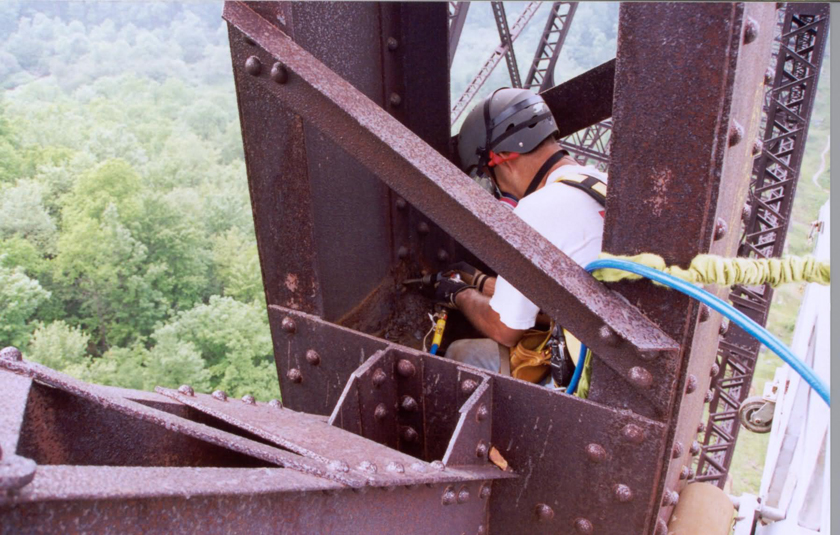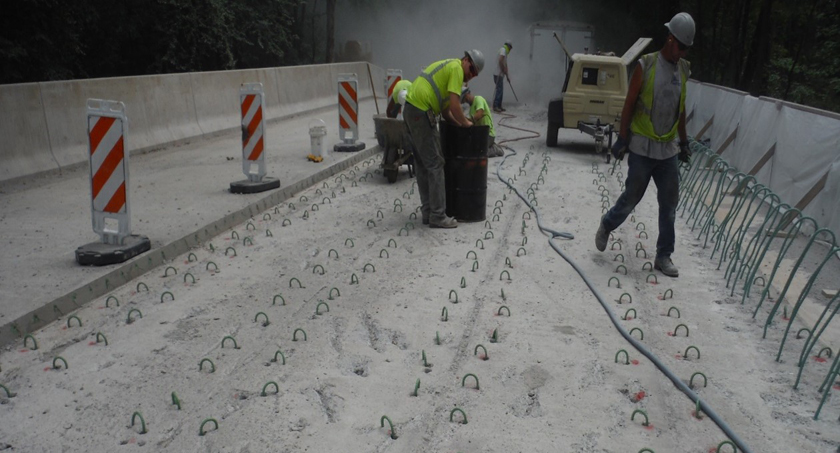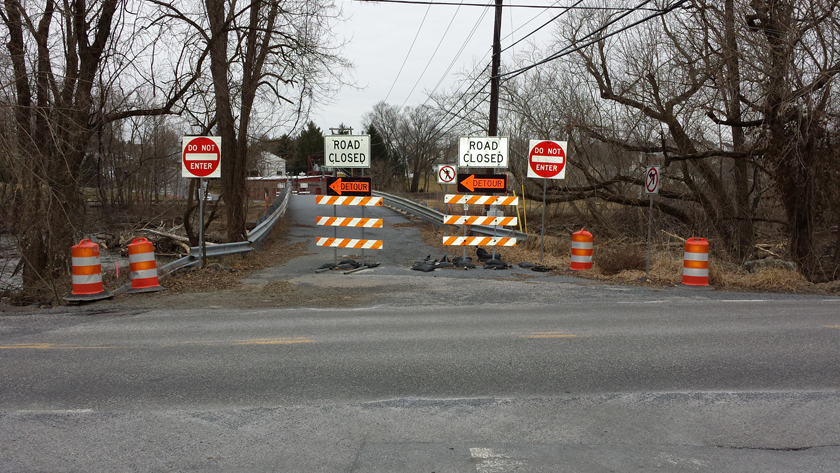Bridge Management Systems Maximize Safety and Reliability While Minimizing the Burden on Taxpayers
May 29, 2019 /
Failure is not an option.
Failing to adequately plan for the maintenance and replacement of your community’s bridges could lead to load-postings that cut a neighborhood off from emergency response vehicles or a closure that makes it hard for residents to get to work and school on time. Even worse, it could lead to a loss of life if the bridge collapses while vehicles or pedestrians are crossing it.
The stakes are high, and you can’t afford to guess.
You need an objective system to help you identify which bridges need attention. You need reliable recommendations on which maintenance approach will be most effective and when it’s time to invest in replacement instead. You need a plan to get the funding you require, and you need documentation to persuade public officials and the community that your approach is the best one to keep the public moving and keep it safe.
A bridge management system can help.
SOURCE: U.S. Air Force photo/ W.C. Pope. Photo by TSgt. Amelia Leonard.

Area drivers count on you to ensure the bridges they drive are safe for their families. A bridge management system shows you which bridges need repair or replacement, and it helps you plan for that work in advance.
What is a Bridge Management System, and how does it work?
A Bridge Management System is a five-step approach to maximizing the life and minimizing the cost of your community’s bridges:
Step 1 – Collect data about each bridge’s condition.
Step 2 – Analyze the data and identify the maintenance, rehabilitation or replacement measures required for each structure.
Step 3 – Estimate the cost of the necessary maintenance, rehabilitation, or replacement recommendations.
Step 4 – Prioritize or rank the necessary maintenance, rehabilitation, or replacement recommendations to determine funding priorities and a timetable for completion.
Step 5 – Plan for the necessary funding solution.
The ultimate goal is to help local leaders efficiently direct maintenance and repair dollars where they are needed most, proactively fund the program, and build public support for the work. The program usually outlines plans on a 10-year horizon; however, it can be expanded beyond. Plans are periodically updated as bridge conditions and priorities change within the community.
You can learn more detail about each phase of the bridge management system program by reading our article in the May 2019 issue of Pennsylvania Township News magazine. Contact us to request a copy.

How do Bridge Management Systems benefit your community?
Bridge management systems help communities achieve their bridge performance goals, minimize cost, and maximize the return on investment. They also provide an unbiased, objective method of communicating budget needs to the public, justifying decisions, and building consensus. Most importantly, they are an increasingly important tool for obtaining outside funding from grant agencies and community partners.
Optimize safety and reliability for area drivers
A bridge management system helps you proactively plan for repairs and replacement before deterioration impacts service. Applying maintenance at the right time means bridges function at peak performance for a longer period of time and are replaced before they fail. This means your constituents receive top quality service without disruption and are happier for it.

Rehabilitating a bridge can extend its life and reduce the frequency of expensive replacement, but it must occur at the right time. A bridge management system helps you know when repairs and rehabilitation will be a good investment and when the bridge is too close to the end of its useful life to justify the cost of further repairs.
Stretch your budget dollar for maximum value and prevent wasteful spending
Bridges age, and conditions decline. Over time, the cost of continued repairs offers diminishing returns, yet replacement is expensive. You don’t want to replace a bridge sooner than necessary; however, perfect timing is difficult to pinpoint. A bridge management system can help. It can tell you when maintenance will provide value and extend bridge lifespan. It can also tell you when replacement would be a better investment.
A bridge management system helps you determine priorities and target budget dollars to the projects that are highest priority for your community. Which bridges carry the most traffic? Which bridges provide crucial access in an emergency? Does a bridge provide the only access to a particular neighborhood? Is a bridge an important link in the transportation network that supports local commerce? When you can’t fund every project, a bridge management system can help you choose which ones to pursue wisely.

A bridge management system helps you calculate when maintenance and rehabilitation are good investments that will prolong the life of the bridge and when replacement would be the more cost-effective option.
Proactively set aside funds to address long-term needs and attract outside funding
A single bridge replacement can cost hundreds of thousands of dollars. Most communities don’t have this kind of money lying around, waiting to be spent. They must plan years in advance, carefully setting aside funds over time, or they must borrow money to cover the cost. A bridge management system provides a 10-year or longer schedule of capital improvements with detailed cost estimates, so that townships can save the necessary funds for these projects and avoid taking on expensive debt.
A bridge management system also provides the type of data that is necessary to get a project on the state Transportation Improvement Program (TIP), so that it is prioritized for state and federal funding. It requires a community to identify why a project is necessary and develop a preliminary approach to design and construction with detailed cost estimates. It demonstrates that the community has a program in place to get a project built and maintain it once it’s complete. All of this information makes a project more attractive to grant agencies.
It also makes it easier to attract private sector and community partners who will contribute funds to a project.
With a proper bridge management system in place, communities will be able to budget for their bridge needs, instead of incur debt. They’ll also be able to lower their own cost by leveraging outside funds more effectively.
Minimize Risk
Knowing which infrastructure is most likely to fail (and correcting deficiencies before it does) can save you major hassles later in the form of road closures and delay. Knowing which failures would be the most impactful helps you target money toward their prevention as a first priority. With the budget limitations of municipal government, you might not be able to prevent every system failure, so it’s important to know which ones have the potential to cause the most financial damage and impact the most constituents. This way, you can focus your efforts on preventing those first. If a failure does occur, a good asset management plan will include a proactive response plan to reduce damage and disruption. This plan would consider detour routes if a bridge must be closed suddenly.

Closing a bridge to traffic is hard on the community. A bridge management system can help you identify the bridges most at risk and repair them before closure is necessary.
Build Public Support for Projects & Foster Open Communication
Residents may complain about detours or wonder why a bridge near their home isn’t being repaired when others are. A bridge management system provides objective data and analysis you can use to justify these decisions and build public support.
Summary
A bridge management system helps communities provide safer, more reliable transportation access for their residents and businesses. It helps local officials target their budget dollars where they’ll provide the most benefit and extend the lifespan of its bridges to minimize long-term costs. It also helps a community attract outside funding from grant agencies and community partners, which lowers the burden on taxpayers.
Many consultants can assist with setting up a bridge management system, and the services they provide will vary to some degree. Some consultants simply inventory bridge condition and offer repair and replacement recommendations to maximize safety and reliability. A consultant with added expertise in municipal finance and state and federal funding programs can provide enhanced value by helping the municipality plan how it will actually fund and accomplish those recommendations within the limitations most local governments face. Ideally, this consultant will be skilled at building community partnerships to lower project costs and attract even more funding.
HRG has all of this expertise in-house: from bridge inspection and analysis through capital improvement planning and funding assistance. We excel at bringing stakeholders together to make projects happen. Give us a call to discuss your community’s bridges.
This article is an excerpt from a longer article we published in the May 2019 issue of Pennsylvania Township News magazine. This magazine is published by the Pennsylvania State Association of Township Supervisors. Learn more on their website.


